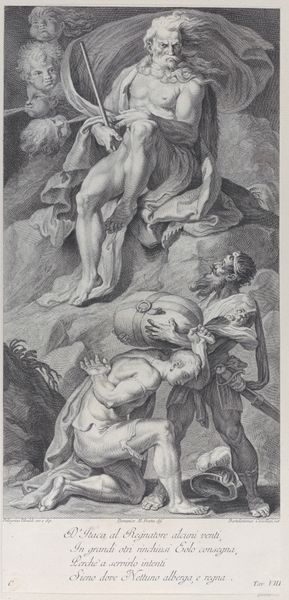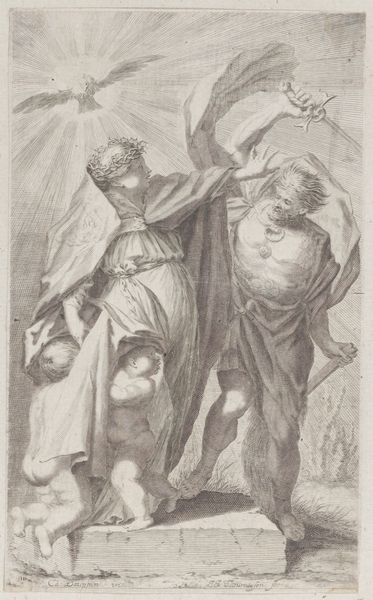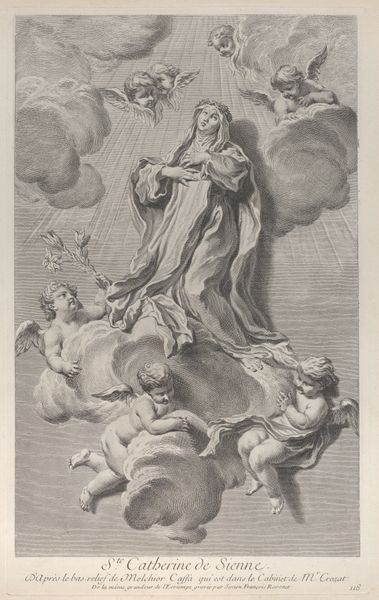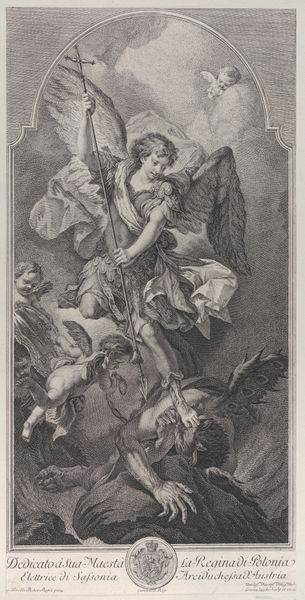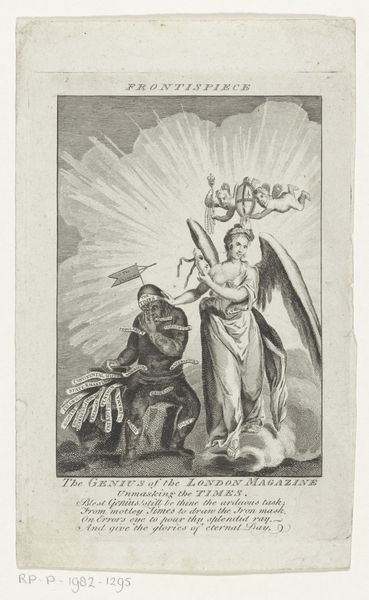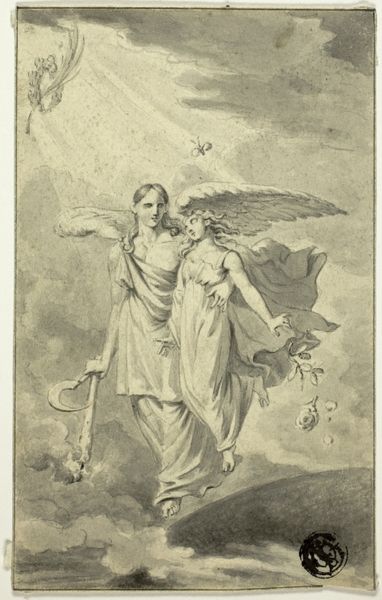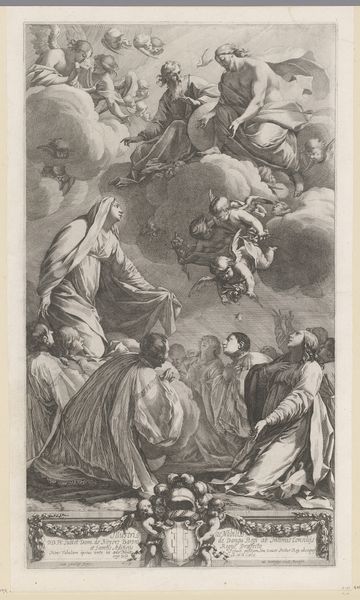
Minerva assisting Prometheus as he attempts to scale the heavens 1756
0:00
0:00
drawing, print, engraving
#
pencil drawn
#
drawing
#
neoclacissism
#
allegory
# print
#
pencil sketch
#
classical-realism
#
charcoal drawing
#
figuration
#
form
#
pencil drawing
#
line
#
pencil work
#
history-painting
#
engraving
Dimensions: Sheet (Trimmed): 12 3/8 × 5 9/16 in. (31.5 × 14.1 cm)
Copyright: Public Domain
Bartolomeo Crivellari created this print of Minerva assisting Prometheus sometime in the 1700s. It's an engraving on laid paper, now held at the Metropolitan Museum of Art. It depicts the scene of Prometheus stealing fire from the gods, assisted by Minerva, goddess of wisdom and strategic warfare. Made in Italy during the height of the Enlightenment, we can see how this image creates meaning through its references to classical mythology, reinterpreting the tale of Prometheus, a figure known for his rebellion against the divine order to bestow knowledge upon humanity. What is interesting here is that it seems to be a reference to the Renaissance rediscovery of classical antiquity, a cultural movement that sought to emulate the artistic achievements of ancient Greece and Rome. The institutions of art in Italy were often supported by wealthy patrons, who played a crucial role in commissioning and promoting artistic talent. To properly interpret the work of art we need to look to sources that can tell us about social context, patronage, and artistic movements that might help to clarify the meaning of this striking image. The meaning of art hinges on its social and institutional context.
Comments
No comments
Be the first to comment and join the conversation on the ultimate creative platform.
